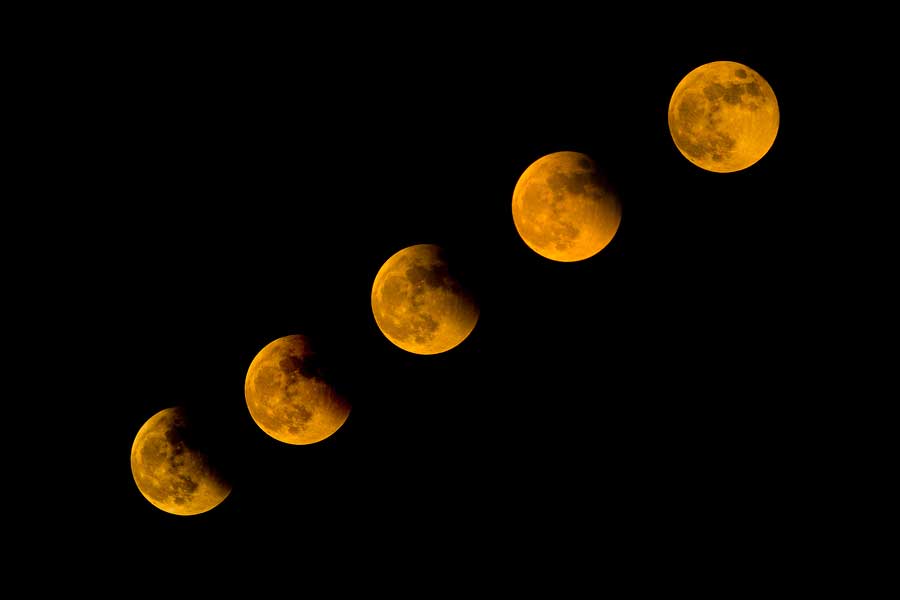An astonishing total lunar eclipse is expected to take place on September 27, as the Moon passes directly behind the Earth into its shadow.
Observers across most of North and South America will be able to watch 72 minutes of total lunar eclipse on the evening of September 27. Those watching from the West Coast of North America, will see the moon already partially eclipsed when it rises after dark. For the Midwest and East, viewers will have several hours to watch the moon rise and change color as the eclipse progresses.

Most of Europe, Africa and the Middle East will watch the event before dawn on September 28.
This date is particularly special as there will be both a “super moon,” the largest full moon of the year, and a Harvest Moon, which is the full moon nearest to the September equinox.
Shining Planets
During this month planets such as Venus, Mars, Mercury, Jupiter and so on, will make special appearances among September’s night skies.
Here is a daily description of how and when to see them:
September 4: About half an hour after sunset, viewers should look into the horizon just south of due west to spot Mercury. Planet Mercury will be 27º east of the Sun during this evening, which is the furthest it will get in 2015. It will be difficult to watch for those who are in northern latitudes. However, farther south, Mercury will set in a darker sky and it will be visible to the naked eye. Moreover, Mercury will pass between the Earth and the Sun (a condition called inferior conjunction), on the night of September 30.
September 18: During this evening Saturn can be found about 2 and a half degrees to the left of a crescent moon. Saturn spends September drawing closer to Antares, the brightest star in the Scorpius constellation, and by the end of the month will be 11º to the star’s right.
September 20: Venus will be rising into view at night skies early this month. However, it will shine its best on the night of September 20. By the end of the month it will rise more than two hours before dawn’s early light.
September 25: Mars is set to glide 0.8º to the north of the star Regulus. The contrasting duo is 11º to the lower left of Venus and 10º above and to the right of Jupiter.
By the end of September Jupiter will be rising more than 2 hours before sunrise and will be visible in the pre-sunrise eastern sky.
Equinox
An equinox happens twice a year, around March 21 and September 23. This year the sun will arrive at the September equinox at 4:21am EDT on September 23, as forecasted. This determines the start of autumn for the Northern hemisphere and spring for the Southern Hemisphere. As usual, for the next six months, the Norther Hemisphere will experience nights longer than days.
September’s Moon Phases
Furthermore, the moon is expected to be at third quarter on September 5; new on September 13; at first quarter on September 21 and, finally, full on September 28
Source: IU Bloomington Newsroom
